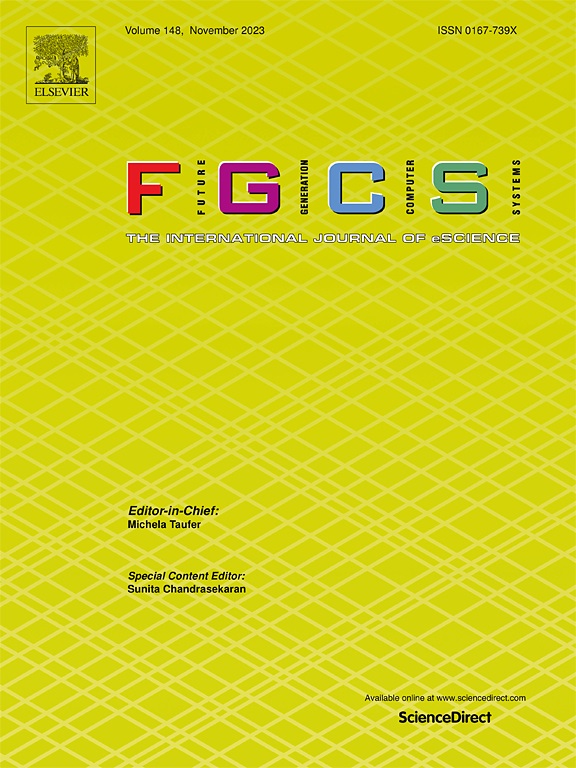Fuzzy energy management strategies for energy harvesting IoT nodes based on a digital twin concept
IF 6.2
2区 计算机科学
Q1 COMPUTER SCIENCE, THEORY & METHODS
Future Generation Computer Systems-The International Journal of Escience
Pub Date : 2025-01-17
DOI:10.1016/j.future.2025.107717
引用次数: 0
Abstract
This study presents a cloud-assisted energy management strategy for energy harvesting Internet-of-Things (IoT) nodes, using a novel digital twin (DT) concept for dynamic optimization of IoT node behavior. The system is built upon a fuzzy-rule-based controller optimized through a differential evolution (DE) algorithm. DE is particularly well-suited for this application, as it is capable of optimizing the controller without requiring gradient information, allowing it to efficiently navigate the complex, nonlinear characteristics of IoT energy management problems. The optimization process tunes nine key fuzzy input coefficients to create an energy-efficient control strategy. The DT concept serves as a virtual replica of the physical IoT node, continuously synchronizing real-time data from sensors and other internal parameters, including energy harvesting rates and component health. Through this real-time feedback loop, the DT enables predictive adjustments to the control system, increasing the longevity and reliability of the IoT devices in harsh and changing environments. Compared to traditional energy management strategies, the proposed method improves energy utilization by 11%, leveraging four years of solar data collected from multiple geographical locations. Moreover, the system achieves a 12% increase in successful transmissions, ensuring greater data availability in the cloud while minimizing device failures and optimizing the use of available energy. The DT concept allows the system to simulate and predict IoT node behavior under various conditions, continuously refining the energy management strategy. This ensures not only optimal energy efficiency but also accounts for component degradation over time, offering long-term adaptability and minimizing the need for manual intervention. Thus, the synergy between the DT concept and DE optimization offers a powerful, scalable solution for managing energy-constrained IoT networks, surpassing conventional expert-designed strategies in both adaptability and performance.
求助全文
约1分钟内获得全文
求助全文
来源期刊
CiteScore
19.90
自引率
2.70%
发文量
376
审稿时长
10.6 months
期刊介绍:
Computing infrastructures and systems are constantly evolving, resulting in increasingly complex and collaborative scientific applications. To cope with these advancements, there is a growing need for collaborative tools that can effectively map, control, and execute these applications.
Furthermore, with the explosion of Big Data, there is a requirement for innovative methods and infrastructures to collect, analyze, and derive meaningful insights from the vast amount of data generated. This necessitates the integration of computational and storage capabilities, databases, sensors, and human collaboration.
Future Generation Computer Systems aims to pioneer advancements in distributed systems, collaborative environments, high-performance computing, and Big Data analytics. It strives to stay at the forefront of developments in grids, clouds, and the Internet of Things (IoT) to effectively address the challenges posed by these wide-area, fully distributed sensing and computing systems.

 求助内容:
求助内容: 应助结果提醒方式:
应助结果提醒方式:


